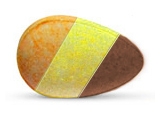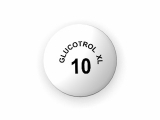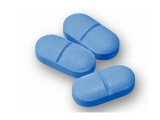Princeton guidelines erectile dysfunction
Erectile dysfunction (ED) is a common condition among men, affecting up to 50% of men over the age of 40. ED can have a significant impact on a man's quality of life and self-esteem, as well as his relationships. Fortunately, advances in medical treatment have made managing ED possible for many men.
The Princeton Guidelines for Erectile Dysfunction were developed in 2000 by a group of leading experts in men's health. The guidelines provide clinicians with evidence-based recommendations for the evaluation and treatment of ED, as well as recommendations for lifestyle changes that can help prevent ED.
Understanding the causes of ED is an important part of effective treatment. The Princeton Guidelines identify both physical and psychological factors that can contribute to ED, including obesity, hypertension, diabetes, smoking, stress, and depression. Treatment approaches can range from lifestyle changes to medication to surgery, depending on the individual patient's needs and preferences.
If you or someone you know is experiencing ED, it's important to seek medical advice. With the help of the Princeton Guidelines, a healthcare provider can evaluate the underlying causes of ED and develop a personalized treatment plan to help improve sexual function and overall quality of life.
Understanding Erectile Dysfunction
What is Erectile Dysfunction?
Erectile dysfunction (ED) is a medical condition that refers to the inability to achieve or maintain an erection sufficient for sexual intercourse. It can affect men of all ages but is more common in older men.
What Causes Erectile Dysfunction?
ED can be caused by a variety of medical, physical, and psychological factors. Medical conditions like heart disease, high blood pressure, diabetes, and obesity can lead to ED. Physical causes can also include certain medications, alcohol and drug abuse, or injury to the pelvic area. Psychological factors such as stress, anxiety, and depression can also contribute to ED.
What are the Symptoms?
The most common symptom of ED is the inability to get or keep an erection. Other symptoms may include reduced sexual desire, premature ejaculation, or delayed ejaculation.
How is ED Diagnosed?
A diagnosis of ED is typically made by a healthcare provider after a thorough medical history and physical exam. Additional tests may be ordered to determine underlying causes, such as blood tests, urine tests, and imaging studies.
How is ED Treated?
Treatment for ED depends on the underlying cause. Lifestyle changes, such as losing weight, quit smoking, and reducing alcohol consumption can help improve erectile function. Medications, such as sildenafil, tadalafil, and vardenafil, can also be prescribed to treat ED. In some cases, surgery may be necessary to repair damaged blood vessels or nerves that are causing ED. Psychological counseling may also be recommended for men with underlying emotional or psychological issues.
What is Erectile Dysfunction?
Overview
Erectile Dysfunction (ED) is a common condition that affects millions of men worldwide. It is defined as the inability to achieve or maintain an erection firm enough for sexual activity.
Causes
ED can be caused by a variety of physical and psychological factors. Common physical causes include age, obesity, diabetes, cardiovascular disease, and some medications. Psychological causes can include stress, anxiety, depression, and relationship problems.
Symptoms
The main symptom of ED is the inability to get or maintain an erection long enough for sexual activity. Other symptoms can include reduced sexual desire and difficulty achieving orgasm.
Treatment
Treatment for ED can vary depending on the underlying cause. Options can include lifestyle changes such as exercise and a healthy diet, medication, therapy, or surgery. It is important to consult with a healthcare provider to determine the best treatment plan for each individual case.
Causes of Erectile Dysfunction
Physical Causes
Erectile dysfunction can occur due to physical issues affecting the body. The main physical causes of erectile dysfunction are:
- Cardiovascular disease: high blood pressure, coronary artery disease, and high cholesterol levels can impair blood flow to the penis and lead to erectile dysfunction.
- Diabetes: poorly controlled diabetes can damage the nerves and blood vessels leading to the penis, causing erectile dysfunction.
- Obesity: obesity can increase the risk of developing cardiovascular disease and diabetes, both of which can lead to erectile dysfunction.
- Hormonal imbalances: low testosterone levels can cause erectile dysfunction in men.
- Neurological conditions: conditions such as Parkinson's disease, multiple sclerosis, and spinal cord injuries can lead to erectile dysfunction.
Psychological Causes
Psychological factors can also contribute to erectile dysfunction. These include:
- Anxiety
- Depression
- Stress
- Relationship issues
- Performance anxiety
Often, psychological causes of erectile dysfunction can lead to a cycle of anxiety, stress, and decreased sexual desire, making the issue worse.
Medications
Finally, certain medications can cause or contribute to erectile dysfunction. These include:
- Antidepressants
- Antihistamines
- Blood pressure medications
- Medications for prostate cancer
If you are experiencing erectile dysfunction, it's important to speak with your healthcare provider to help identify the underlying cause and develop a treatment plan.
Treatment Options
1. Medication
Medications such as sildenafil (Viagra), tadalafil (Cialis), and vardenafil (Levitra) are commonly prescribed to treat erectile dysfunction. They work by increasing blood flow to the penis, resulting in an erection. These medications should only be taken under the guidance of a healthcare provider.
2. Vacuum Devices
Vacuum devices are another treatment option for erectile dysfunction. They consist of a plastic cylinder that is placed over the penis, creating a vacuum. This vacuum draws blood into the penis, resulting in an erection. A band is placed at the base of the penis to maintain the erection.
3. Penile Injections
Penile injections involve the injection of medication directly into the penis. This medication causes an increase in blood flow, resulting in an erection. This treatment is effective but can be uncomfortable for some men.
4. Surgery
Surgical treatment options for erectile dysfunction are typically only recommended as a last resort. Procedures such as penile implants and vascular surgery can help to improve blood flow to the penis and increase the likelihood of achieving an erection.
5. Lifestyle Changes
Lifestyle changes such as quitting smoking, maintaining a healthy weight, and engaging in regular exercise can also help to improve erectile dysfunction. Seeking assistance for stress and anxiety can also be beneficial.
Medication for Erectile Dysfunction
Oral Medications
One of the most popular forms of medication for treating erectile dysfunction are oral medications. These include sildenafil (Viagra), tadalafil (Cialis), vardenafil (Levitra), and avanafil (Stendra). These medications work by increasing blood flow to the penis, allowing for an erection to occur. They are typically taken about 30 minutes to an hour before sexual activity and can last for several hours.
It is important to note that these medications should never be taken with nitrates, as this can cause a dangerous drop in blood pressure. They should also be avoided by men with certain health conditions, such as severe heart or liver problems.
Injection Therapy
Injection therapy involves injecting a medication directly into the side of the penis with a small needle. This medication, usually alprostadil, helps to increase blood flow to the penis, allowing for an erection to occur. This method is typically effective within 5-20 minutes and can last for up to an hour.
Although it can be effective, some men may find the idea of injecting their penis to be uncomfortable or unappealing. There can also be side effects such as penile pain or prolonged erections.
Other Options
In addition to oral medications and injection therapy, there are other options available for treating erectile dysfunction. For example, there are topical creams or gels that can be applied directly to the penis to increase blood flow. There are also penile implants available for more severe cases of erectile dysfunction.
It is important to discuss all options with a qualified healthcare professional in order to determine the best course of treatment for each individual situation.
Lifestyle Changes and Natural Remedies
Exercise Regularly
Regular exercise can help improve erectile dysfunction by increasing blood flow throughout the body, including the penis. Aim for at least 30 minutes of moderate exercise, such as brisk walking, cycling, or swimming, five days a week.
Eat a Balanced Diet
A diet that's high in fruits, vegetables, whole grains, lean protein, and healthy fats can help improve erectile dysfunction. Limit your intake of processed and fried foods, as well as sugary drinks and snacks.
Lose Weight
Being overweight or obese can increase your risk of erectile dysfunction. Losing weight through a combination of healthy eating and regular exercise can help improve your sexual function.
Reduce Stress
Chronic stress can have a negative impact on your sex life. Try stress-reducing activities, such as meditation, yoga, or deep breathing, as well as spending time with loved ones, to help alleviate stress.
Try Natural Remedies
Some natural remedies, such as ginseng, horny goat weed, and L-arginine, have been found to help improve erectile dysfunction. However, it's important to talk to your doctor before trying any natural remedies, as they may interact with other medications you're taking.
Princeton Guidelines for Erectile Dysfunction
Understanding Erectile Dysfunction
Erectile dysfunction (ED) is a common condition characterized by the inability to achieve or maintain an erection sufficient for sexual intercourse. It affects a significant proportion of men, particularly those with medical or psychological conditions that contribute to its development. ED may also be a side effect of certain medications or lifestyle factors such as smoking and obesity.
The underlying cause of ED varies from person to person and may involve physical, psychological, or a combination of factors. The assessment of sexual function and medical history are crucial in determining the appropriate treatment plan.
Treatment Options
The treatment of ED aims to improve sexual function and overall quality of life. The most common treatment options include oral medications, injection therapy, vacuum erection devices, and penile implants. Lifestyle changes such as regular exercise, healthy diet, and cessation of smoking are also recommended.
Depending on the cause of ED, treatment may also involve managing underlying medical conditions such as diabetes and hypertension, or addressing psychological issues through counseling or therapy.
Princeton Guidelines
The Princeton Guidelines were developed by a group of experts in the field of sexual medicine to provide evidence-based recommendations for the diagnosis and treatment of ED. They emphasize the importance of individualized treatment based on the patient's medical and sexual history, and the need for ongoing evaluation of treatment effectiveness and the potential need for modification.
- Assess sexual function and medical history
- Evaluate for underlying medical or psychological conditions
- Consider lifestyle modifications and behavioral interventions
- Discuss treatment options and their risks and benefits with the patient
- Monitor response to treatment and adjust as necessary
Overview of the Princeton Guidelines
The Princeton Guidelines for Erectile Dysfunction (ED) were developed by an expert panel of urologists, endocrinologists, psychiatrists, and primary care physicians. Their goal was to provide a comprehensive understanding of the diagnosis and treatment of ED, which affects an estimated 30 million men in the United States alone. The guidelines were first published in 2005 and updated in 2010.
Causes and Risk Factors
The guidelines identify several causes and risk factors for ED, including age, chronic medical conditions (such as diabetes and cardiovascular disease), smoking, and psychological factors (such as anxiety and depression). Understanding these factors is critical to accurately diagnose and treat ED.
Diagnosis and Treatment
The Guidelines recommend a thorough medical history and physical exam, followed by targeted laboratory tests and imaging studies as appropriate. Treatment options range from lifestyle modifications (such as exercise and weight loss) to medication and surgery. The guidelines emphasize the importance of a collaborative approach involving the patient, their partner, and healthcare providers.
Overall, the Princeton Guidelines offer a comprehensive and evidence-based approach to understanding and treating ED. They provide healthcare providers and patients alike with a roadmap to effective diagnosis, treatment, and management of this common condition.
Implementation of the Guidelines in Clinical Practice
Introduction
The Princeton Guidelines for Erectile Dysfunction provide a comprehensive approach for understanding and treating this common condition. They are based on first-line treatment options and are a useful tool for healthcare providers. In this article, we will discuss the importance of implementing these guidelines in clinical practice.
Benefits of Implementing the Guidelines
Implementing the Princeton Guidelines for Erectile Dysfunction in clinical practice has several benefits. These guidelines provide a standardized approach to the diagnosis and treatment of erectile dysfunction, regardless of the underlying cause or patient demographic. They also help healthcare providers to stay up-to-date with the latest treatment options.
Another benefit of implementing the guidelines is improved patient outcomes. The guidelines are evidence-based and incorporate current research in the field of erectile dysfunction. By following the guidelines, healthcare providers can ensure that patients receive the most effective treatment options available.
Challenges to Implementation
While there are many benefits to implementing the Princeton Guidelines for Erectile Dysfunction in clinical practice, there are also some challenges. One of the main challenges is the lack of awareness of the guidelines among healthcare providers. To address this challenge, healthcare organizations can offer education and training sessions for their providers.
Another challenge is patient adherence to treatment. Erectile dysfunction can be a sensitive topic for patients, and some may be hesitant to discuss it with their healthcare provider. To overcome this challenge, providers can create a non-judgmental environment and educate patients on the importance of treatment adherence.
Conclusion
In conclusion, implementing the Princeton Guidelines for Erectile Dysfunction in clinical practice can result in improved patient outcomes. While there are some challenges to implementation, healthcare organizations can work to address these challenges and ensure that their providers are up-to-date on the latest treatment options. By implementing these guidelines, healthcare providers can provide evidence-based care and improve the quality of life for their patients.
Follow us on Twitter @Pharmaceuticals #Pharmacy
Subscribe on YouTube @PharmaceuticalsYouTube





Be the first to comment on "Princeton guidelines erectile dysfunction"